The New York Times -Why the Anti-Hindu Disinformation?
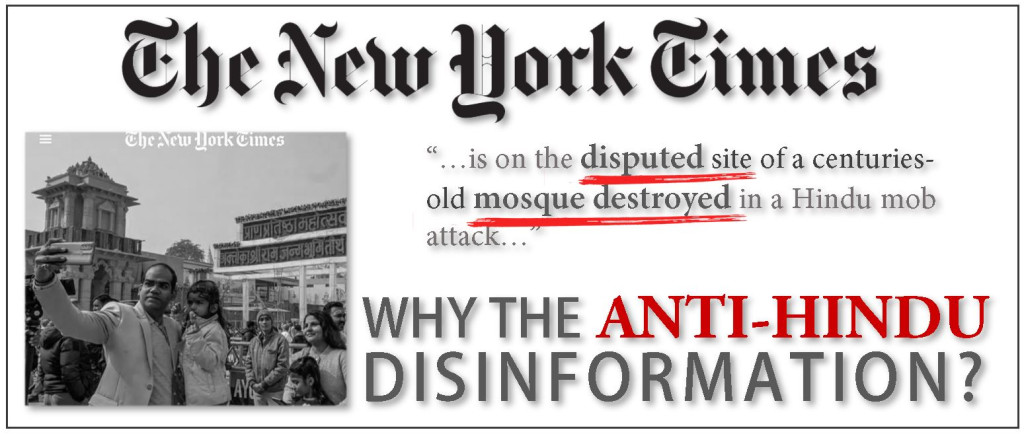
India witnessed a historic moment on 22nd January 2024. Ayodhya – known as birthplace of Bhagwan Ram (considered to be an Avatar of Vishnu), finally got its Ram Mandir (Temple) again at the site called Ramjanma Bhoomi. This was a generational struggle for Hindus and Ram devotees since the 1500s. Many consider this as a civilizational moment, witnessing in their lifetime. Including America, and other parts of the world, and India it was Diwali like celebrations. It was truly a global moment. Unfortunately, some of the International, Western media documented not the beautiful moments of joy and celebrations among Hindu communities but that of misinformation, lies and bias. These media houses used the words and headlines like ‘Fear’, ‘Controversial’, ‘Dispute’, ‘Hindu Supremacy’, ‘Nationalist’, ‘Razed Mosque’. Those readers, unfamiliar with Indian history and the buried details, would most likely buy into these arguments , perceptions and flawed narrative. A worthy question to ask is, why these media houses have conspicuously avoided some of the facts, decades of legal hearings, the verdict from Supreme Court of India, and emotions and tears of millions of Hindu devotees? In its Jan 22, 2024 article, The New York TImes quotes “... The temple inaugurated by the prime minister is on the disputed site of a centuries-old mosque destroyed in a Hindu mob attack that set a precedent of impunity in cases of violence against Muslims.”
“Centuries old mosque destroyed”?.
Interestingly, NYTimes ignored the fact that a 12th century temple existed on the same site. It was in 1528, that an existing Hindu temple was razed by the Moghul invader Babur. The 1891 ‘Archeological Survey of India’ (A British entity in colonial Indian period) report cited by the Supreme Court Judge in the Ayodhya legal case, clearly says “…Mir Khan built a masjid, during the reign of Babar, which still bears his name. This old temple must have been a very fine one ….”. Here is the reference to the 1891 publication The monumental antiquities and inscriptions in the North – Western Provinces and Oudh’
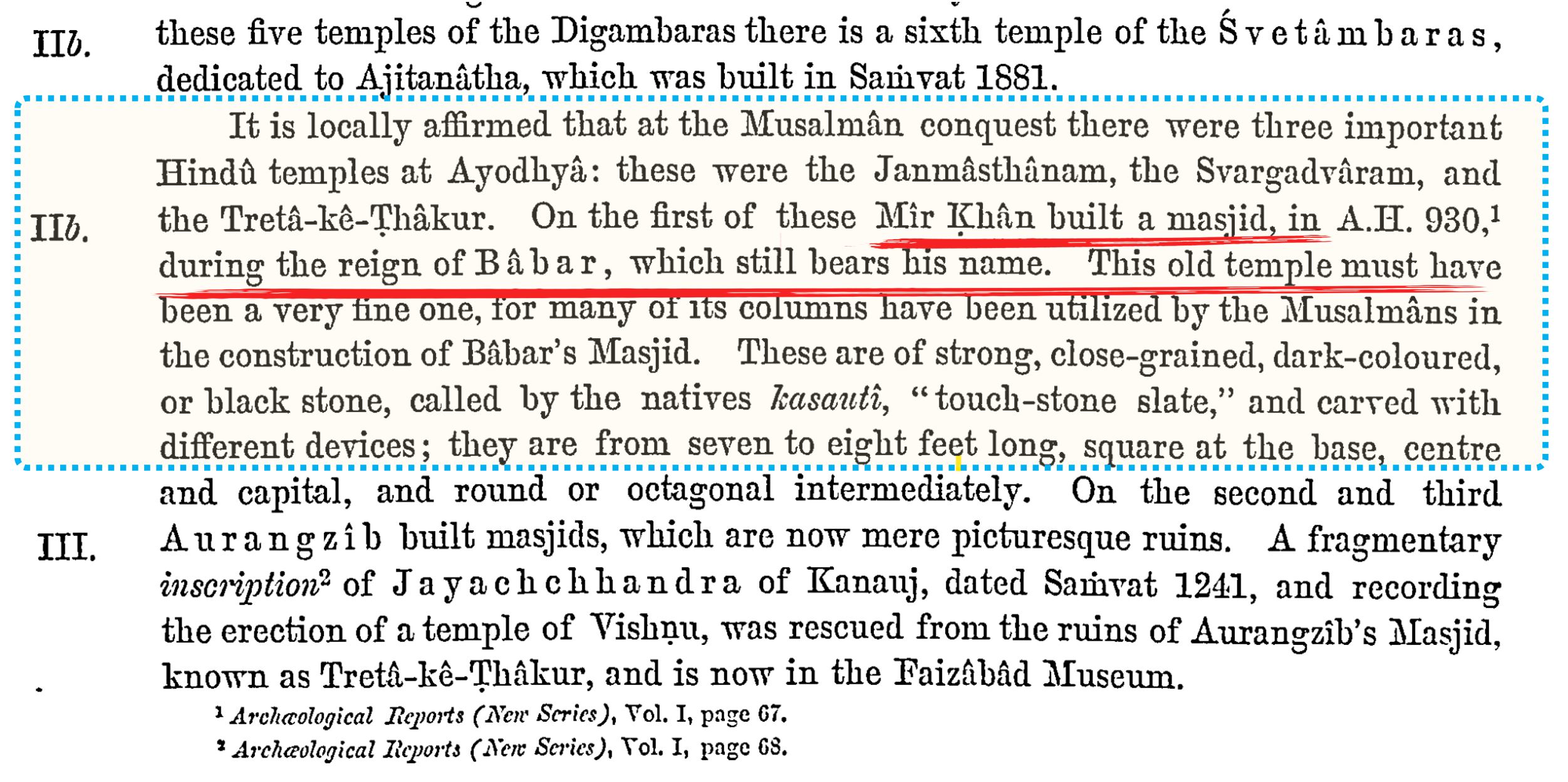
Now about the “Disputed Site”. Is it a disputed site ?
Yes. It was a disputed site while the court proceedings were ongoing for 70 years. But it is no longer a disputed site after the Supreme Court verdict on Nov 9, 2019. It has been four years since the unanimous 5 – 0 verdict came out from the special bench including the Chief Justice of Supreme Court of India – the highest post in the judicial system of Independent India.
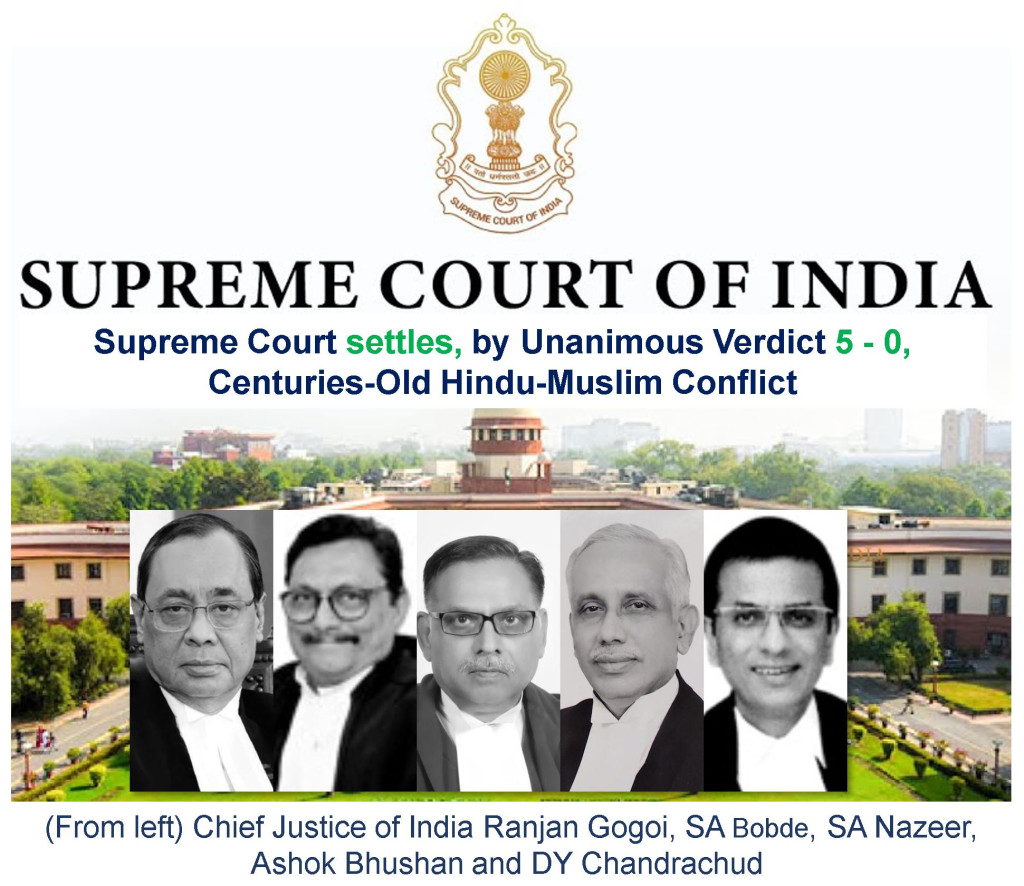
The Supreme Court of India Judgment, Judgment date: Nov 09, 2019
Diary Number: 36350/2010, Case Number: C.A. No.- 010866-010867 – 2010
Link to 1045 page official report: 6350_2010_1_1502_18205_Judgement_09-Nov-2019
The verdict was accepted and welcomed by the opponent party, and the property gets handed over to the ‘presiding deity’. – Bhagwan Ram in this case. The main litigant, Mr. Iqbal Ansari said “that the dispute over Ram Temple has ended completely, adding that whatever may have been the struggle, today has become the day of the people.” The case was resolved with clear evidence and the judgment fully accepted by all parties.
The evidence collected by The Archeological survey of India (ASI) in 2003 under the High Court ordered excavation , revealed that a “massive temple” structure existed below the ‘Babri Masjid’ that was demolished in 1992. The January 22, 2024 event was the restoration of a temple that was razed 500 years ago and not the other way. The consecration was completed after decades of legal battle and the patience of a billion plus population. The NYTimes completely ignored this fact and stoked the misinformation that a mosque was destroyed. The perception completely changes when you point the needle to the older date and facts in history. Sadly such narrative would add up to the propaganda against the minority Hindu Americans and normalize the hatred against them if not amplify.
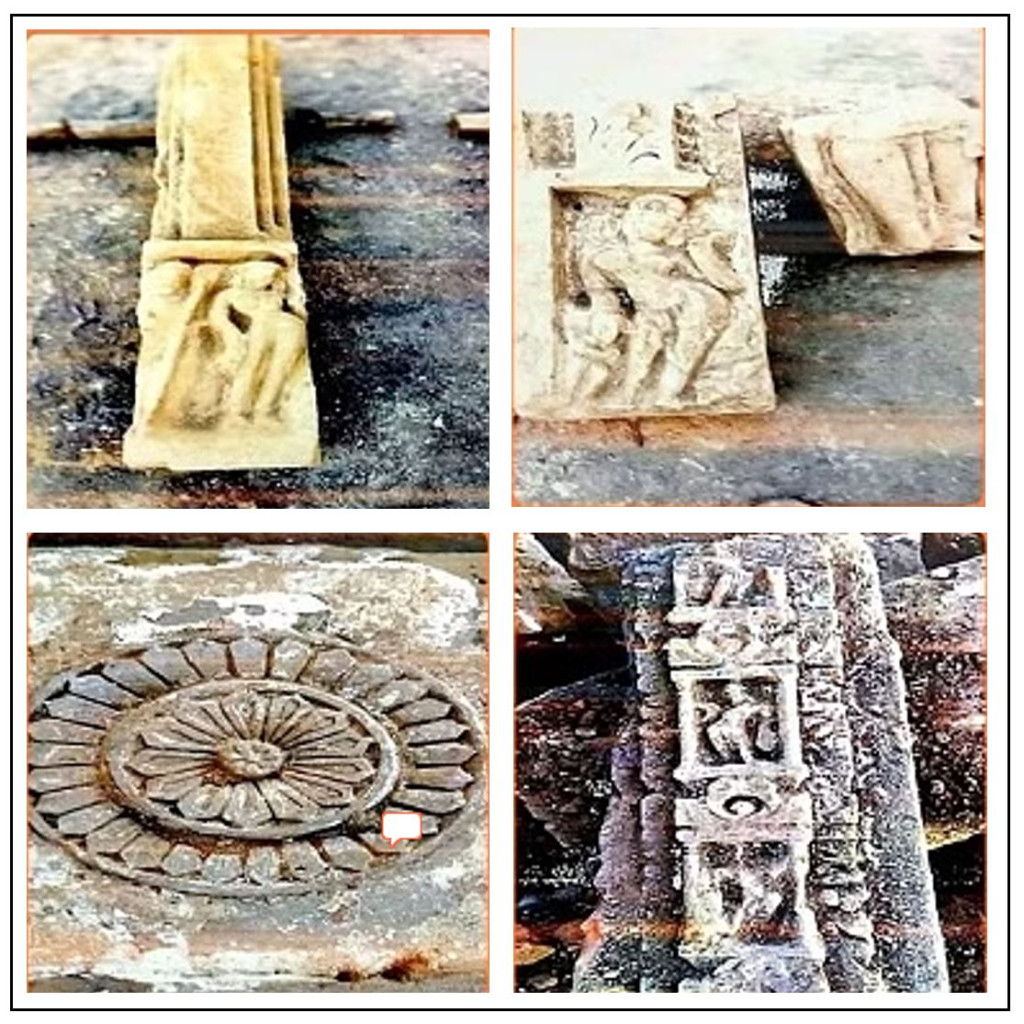
Here are couple of references from Indian media:
Times of India: Archaeologist B R Mani: Hindus, Muslims were part of ASI’s Ayodhya Excavations.
The Hindu relics found during the temple constructions
The Supreme Court of India accepted the 2003 ASI report as proof of a large temple of Hindu religious origin whose foundations were used to build a mosque over it. Supreme Court in its judgment says ”…There is adequate basis in the material contained in the ASI Report to lead to the following conclusions:
- The Babri mosque was not constructed on vacant land
- The excavation indicates the presence of an underlying structure below
- The underlying structure was not of Islamic origin
- Excavation reveals traces of successive civilizations, with the age of North Black Polished Ware traceable to the second century B.C.
- Pre-existing underlying structure dating back to the twelfth century
- The mosque in dispute was constructed upon the foundation of a pre-existing structure
- Indicative of Hindu worship dating back to the eighth to tenth century”
With such clinching evidence and the case resolved fully, how can this be a disputed site any more?
The Anti-India sentiment and promoting disinformation seems to be a habit to NYTimes. Here are a few that can help see the problem with NYTimes.
- In the 2009 Forbes article, Sumit Ganguly, the Visiting Scholar at the Center on Democracy, Development and the Rule of Law at Stanford University, faults the editorial board of NYT for its “hectoring” and “patronizing” tone towards India.
- The New York Times in 2014 published a cartoon on the event of India’s Mars Orbiter Mission, showing a turban-wearing man with a cow knocking at the door of an “elite space club”. It was not just in poor taste but, racial and classist stereotyping
- The New York Times published an article by Asgar Qadri attacking the Indian sari as a “conspiracy by Hindu Nationalists” (In India, Fashion Has Become a Nationalist Cause)
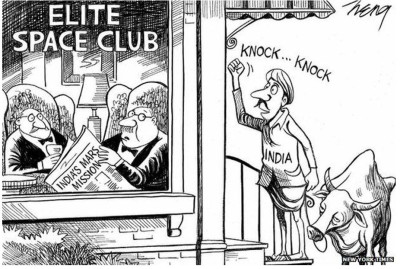
The New York Times, established in 1851 has been an influential and popular media house in the West. But when it comes to India, Hindus and Hinduism evidently the New York Times gets it wrong more than right. Is it any malice on the part of the authors and editors habituated to malpractices in Journalism or simply a sloppy and shoddy job? The reader is the better judge. Maybe the NYT has grown old and lost its way, maybe it’s time they recalibrate their compass for editorial ethics
